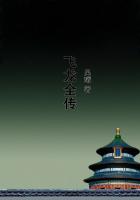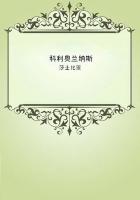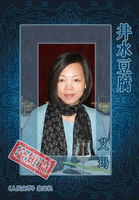Now appeared James Densmore and bought a share in the machine, while Soule and Glidden retired.Densmore furnished the funds to build about thirty models in succession, each a little better than the preceding.The improved machine was patented in 1871, and the partners felt that they were ready to begin manufacturing.
Wisely they determined, in 1873, to offer their machine to Eliphalet Remington and Sons, then manufacturing firearms, sewing machines, and the like, at Ilion, New York.Here, in well-equipped machine shops it was tested, strengthened, and improved.The Remingtons believed they saw a demand for the machine and offered to buy the patents, paying either a lump sum, or a royalty.It is said that Sholes preferred the ready cash and received twelve thousand dollars, while Densmore chose the royalty and received a million and a half.
The telegraph, the press, and the typewriter are agents of communication for the written word.The telephone is an agent for the spoken word.And there is another instrument for recording sound and reproducing it, which should not be forgotten.It was in 1877 that Thomas Alva Edison completed the first phonograph.
The air vibrations set up by the human voice were utilized to make minute indentations on a sheet of tinfoil placed over a metallic cylinder, and the machine would then reproduce the sounds which had caused the indentations.The record wore out after a few reproductions, however, and Edison was too busy to develop his idea further for a time, though later he returned to it.
The phonograph today appears under various names, but by whatever name they are called, the best machines reproduce with wonderful fidelity the human voice, in speech or song, and the tones of either a single instrument or a whole orchestra.The most distinguished musicians are glad to do their best for the preservation and reproduction of their art, and through these machines, good music is brought to thousands to whom it could come in no other way.
The camera bears a large part in the diffusion of intelligence, and the last half century in the United States has seen a great development in photography and photoengraving.The earliest experiments in photography belong almost exclusively to Europe.
Morse, as we have seen, introduced the secret to America and interested his friend John W.Draper, who had a part in the perfection of the dry plate and who was one of the first, if not the first, to take a portrait by photography.
The world's greatest inventor in photography is, however, George Eastman, of Rochester.It was in 1888 that Eastman introduced a new camera, which he called by the distinctive name Kodak, and with it the slogan: "You press the button, we do the rest." This first kodak was loaded with a roll of sensitized paper long enough for a hundred exposures.Sent to the makers, the roll could itself be developed and pictures could be printed from it.
Eastman had been an amateur photographer when the fancy was both expensive and tedious.Inventing a method of making dry plates, he began to manufacture them in a small way as early as 1880.
After the first kodak, there came others filled with rolls of sensitized nitro-cellulose film.Priority in the invention of the cellulose film, instead of glass, which has revolutionized photography, has been decided by the courts to belong to the Reverend Hannibal Goodwin, but the honor none the less belongs to Eastman, who independently worked out his process and gave photography to the millions.The introduction by the Eastman Kodak Company of a film cartridge which could be inserted or removed without retiring to a dark room removed the chief difficulty in the way of amateurs, and a camera of some sort, varying in price from a dollar or two to as many hundreds, is today an indispensable part of a vacation equipment.
In the development of the animated pictures Thomas Alva Edison has played a large part.Many were the efforts to give the appearance of movement to pictures before the first real entertainment was staged by Henry Heyl of Philadelphia.Heyl's pictures were on glass plates fixed in the circumference of a wheel, and each was brought and held for a part of a second before the lens.This method was obviously too slow and too expensive.Edison with his keen mind approached the difficulty and after a prolonged series of experiments arrived at the decision that a continuous tape-like film would be necessary.He invented the first practical "taking" camera and evoked the enthusiastic cooperation of George Eastman in the production of this tape-like film, and the modern motion picture was born.The projecting machine was substantially like the "taking" camera and was so used.Other inventors, such as Paul in England and Lumiere in France, produced other types of projecting machines, which differed only in mechanical details.
When the motion picture was taken up in earnest in the United States, the world stared in astonishment at the apparent recklessness of the early managers.The public responded, however, and there is hardly a hamlet in the nation where there is not at least one moving-picture house.The most popular actors have been drawn from the speaking stage into the "movies," and many new actors have been developed.In the small town, the picture theater is often a converted storeroom, but in the cities, some of the largest and most attractive theaters have been given over to the pictures, and others even more luxurious have been specially built.The Eastman Company alone manufactures about ten thousand miles of film every month.
Besides affording amusement to millions, the moving picture has been turned to instruction.Important news events are shown on the screen, and historical events are preserved for posterity by depositing the films in a vault.What would the historical student not give for a film faithfully portraying the inauguration of George Washington! The motion picture has become an important factor in instruction in history and science in the schools and this development is still in its infancy.















